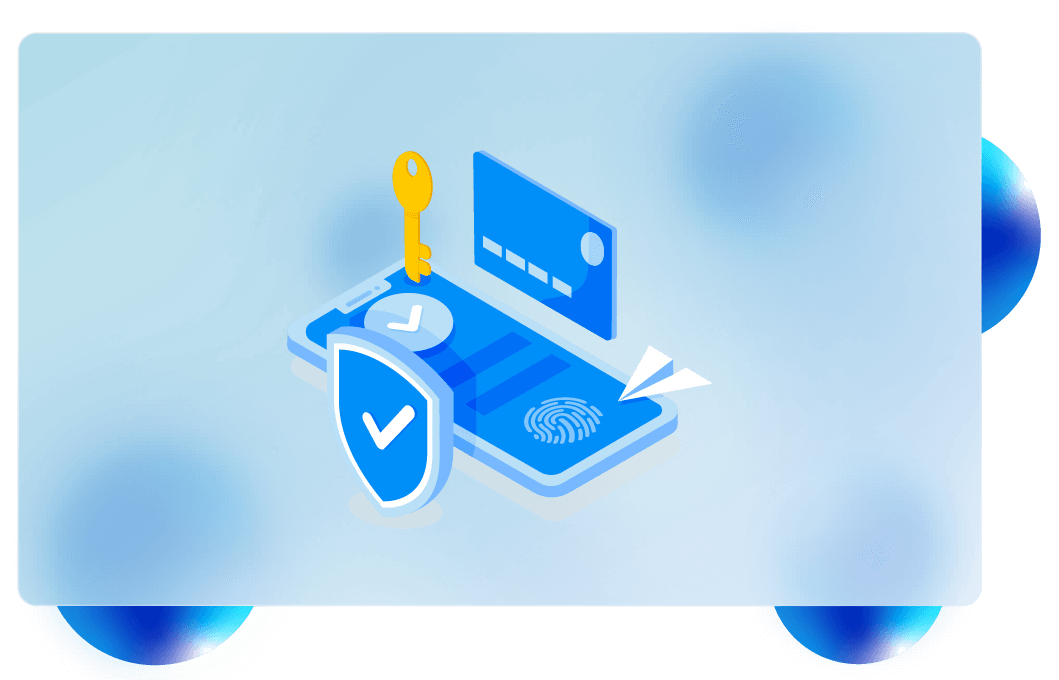Neobanks, which operate exclusively online without traditional physical branch networks, are facing an increasingly challenging landscape due to a significant rise in fraud cases. In recent years, financial institutions have reported a marked increase in fraudulent activities, with the average cost of fraud for institutions with assets over $5 billion rising by 65% from $2.3 million in 2022 to $3.8 million in 2023. This rise in fraud rates includes a significant proportion of unauthorized transactions, where external actors compromise accounts or impersonate bank tech support and the IRS to conduct scams. (PYMNTS.com)
Why are Neobanks Vulnerable?
Unlike traditional banks with in-person verification, neobanks rely on virtual onboarding, making them susceptible to identity theft and account takeover. Additionally, the fast-paced growth of the neobanking industry means fraudsters are constantly innovating new methods to exploit vulnerabilities. Recent reports indicate a surge in various types of fraud, including identity theft, account takeover, and sophisticated social engineering scams targeting these digital-first banks.
One striking example comes from a major neobank in Europe, which reported a loss exceeding €10 million due to a combination of account takeover and new account fraud over just the last year. These incidents not only result in financial losses but also damage the trust and reputation that neobanks work hard to build with their customers.
Here are some of the most common types of fraud targeting neobanks:
- Identity Theft
It involves criminals using stolen personal data to gain access to banking services. Neobanks have been more vulnerable to falling prey to this kind of fraud due to virtual onboarding which has eliminated the need for physical identification. - New Account Fraud or Account Opening Fraud
In this type of fraud, perpetrators successfully establish a bank account with the intent to commit fraud or exploit financial institution benefits, such as promotional signup bonuses. Neobanks are particularly vulnerable to this type of fraud due to their remote account opening capabilities.
- Account Takeover (ATO)
Account Takeover fraud refers to the use of stolen details in order to take control over an existing bank account. Neobanks are often victims of this crime because their platforms seem anonymous. - Social Engineering
This technique involves aggressive and dishonest methods that force individuals into voluntarily giving up their money or financial information to criminals. Digital services offer anonymity, which makes it easier for cybercriminals to target neobanks through such scams. - Phishing Scams
Phishing scams involve pretending one is a legitimate company or organization so as trick people into releasing personal details like credit cards numbers thus can be used for phishing. - Chargeback Fraud
Chargeback fraud occurs when an individual illicitly contests a transaction to obtain a refund. Neobanks, being digital credit providers, face considerable risks associated with such transactions. - Fraud Rings
Fraud rings are organized groups that collaborate to defraud individuals and financial institutions. These rings may exploit neobanks for fund transfers while evading detection. - Romance Fraud
Romance fraud involves deceiving individuals into sending money under the false pretense of a genuine relationship. Neobanks may detect unusual withdrawals or transfers indicating such fraud.
- Funds Transfer Fraud (FTF) or Wire Transfer Fraud
Funds transfer fraud occurs when malicious actors surreptitiously transfer illicit funds using various methods, taking advantage of the anonymity and convenience offered by neobanks.
- Loan Application Fraud
Loan application fraud entails applying for a financial loan using stolen or fabricated information. Fraudsters target neobanks for loans, hoping for higher approval rates, before absconding without repayment.
Fraud Cases in Neobanks:
- In Nigeria, a clash between traditional banks and neobanks over fraud concerns led to restrictions on fund transfers to several neobanks, emphasizing the challenge of maintaining flexible account verification processes while ensuring security (TechCabal).
- Nigerian financial institutions reported substantial losses due to fraud, highlighting incidents involving large amounts illicitly withdrawn or transferred, showcasing the financial impact of fraud on the sector (TechCabal).
- In a case of fraud involving fake Paypal signups to exploit bonuses, fraudsters created numerous fake accounts to aggregate signup bonuses. This scheme was identifiable by multiple accounts originating from the same IP addresses and locations. The solution involved implementing an onboarding orchestration solution to detect unusually high numbers of account openings in specific areas or inconsistencies between the country of the IP address and the account’s registered country. This approach aimed to identify and prevent the fraudulent creation of approximately 4.5 million accounts.
- The most common type of fraud affecting businesses is APP/P2P transaction-based fraud, characterized by its speed, difficulty to trace, and challenge in recovery (The Financial Brand).
- Romance fraud involves tricking individuals into sending money under the pretense of a romantic relationship. Platforms like Monzo and Revolut have encountered such fraudulent activities, where criminals establish emotional connections to exploit victims financially. To combat this, it’s crucial to implement transaction monitoring to detect unusual money transfers between entities that typically don’t interact, helping to identify and prevent such scams.
Facts About the Neobank industry:
- Despite the challenges above, the neobank industry is poised for significant growth. Neobanks are experiencing significant developments as we progress into 2024. A recent industry report, “Digital Challenger Banks – The Dawn of Profitability,” highlights that neobanks are now seeing their first glimpses of profitability. This shift comes after years of prioritizing customer acquisition, often casting doubts on their long-term profitability. (Yahoo Finance)
- The global neobanking market size was valued at USD 98.40 billion in 2023 and is projected to reach USD 3,406.47 billion by 2032, exhibiting a CAGR of 48.6% during the forecast period. (Fortune Business Insights)
- Europe is currently leading the neobanking market, supported by a robust fintech ecosystem, significant investments, and a favorable regulatory environment.
How Neobanks Can Manage and Prevent Fraud
Leveraging Advanced Technologies
Use AI and ML algorithms to scrutinize the number of conducted transactions in order to identify abnormalities or cheating. These technologies learn from historical data, so fraud detection system becomes more accurate with time. Moreover, biometric verification methods such as fingerprint scanning, facial recognition, and voice authentication can be used to improve security during account access and transaction approval. This adds an extra level of security while making it difficult for scammers to make copies of these techniques. Also, Liveness detection helps combat Account Takeover attempts by confirming the user’s presence during logins, particularly on new devices or suspicious activity.
Strong Authentication Processes
Apply multi-factor authentication (MFA) for customers and employees. This may include something that the user is aware of (password), something that he has (mobile device), and something the user is (biometric verification).
Invest in Risk & Compliance
Make sure you invest in risk & compliance from day one if your neobank wants to succeed in the long-term. Although it may seem like a good idea to employ most resources into expanding your business early on, but building a solid team for risk and compliance will bring significant returns with time.
Fraud prevention goes beyond simply thwarting fraudulent activities; it’s also about mitigating the broader financial impact of fraud on your neobank. By empowering your risk and compliance team with cutting-edge fraud detection software, you not only enhance your ability to prevent fraud but also minimize false-positive rates. This proactive approach not only safeguards your neobank but also fosters revenue growth opportunities.
Strengthen KYC/KYB processes
Strengthen the KYC/KYB process to fortify your neobank’s defense against fraud. It is essential for digital service providers, such as your neobank, to know their customers (KYC) and applicants in business (KYB) thoroughly because of increased fraud attempts during virtual onboarding.
The introduction of strong identity verification techniques like checking ID documents and incorporate data sources into robust workflows are important for a secure onboarding process. Investing in these automated tools at the onset of the user journey empowers your risk and compliance team to streamline verification processes and safeguard accounts effectively.
Prioritize Regulatory Compliance
Make regulatory compliance a central piece of your neo-bank’s operations. Regulations like the ones from FinCEN are supposed to protect customer’s interests and provide opportunities for your risk and compliance team to strengthen your digital infrastructure.
Stay vigilant in monitoring and adapting to evolving regulations relevant to your neobank. Regularly assess your workflows to identify potential gaps in risk management and ensure compliance with minimum standards. Continuous testing of workflows is essential to strengthen fraud prevention and detection mechanisms within your digital framework.
Closing Thoughts
Neobanks face relentless pressure to stay ahead of evolving fraud tactics, requiring continuous enhancement of prevention measures. Effective combat against fraud requires a deep understanding of emerging threats as well as adaptable counteractions against ever changing methods employed by fraudsters. The growth in financial sector carries with it inherent risks, which makes the neobanking industry particularly susceptible to fraudulent activities. Neobanks can thwart fraudulent attempts in a proactive manner by leveraging insightful strategies and robust technological frameworks.
Now that you have a full grasp of dynamics related to frauds that exist within neobanks and how they can be stopped, you’re ready for implementing effective, efficient, and cost-sensitive fraud-mitigation measures. It is important to continually monitor the newest threats as they come up so as not to fall victim. To learn more about our solutions that would optimize your company’s anti-fraud checking systems, schedule a demo with us today.
Secure Your Neobank Today!Request a demo

Mohini Sahu is a Digital & Content Marketing Executive at IDcentral (A Subex Company). She specializes in crafting engaging content on KYC and Onboarding Technology. With a thorough understanding of diverse industries, she creates insightful content on emerging trends and best practices.
